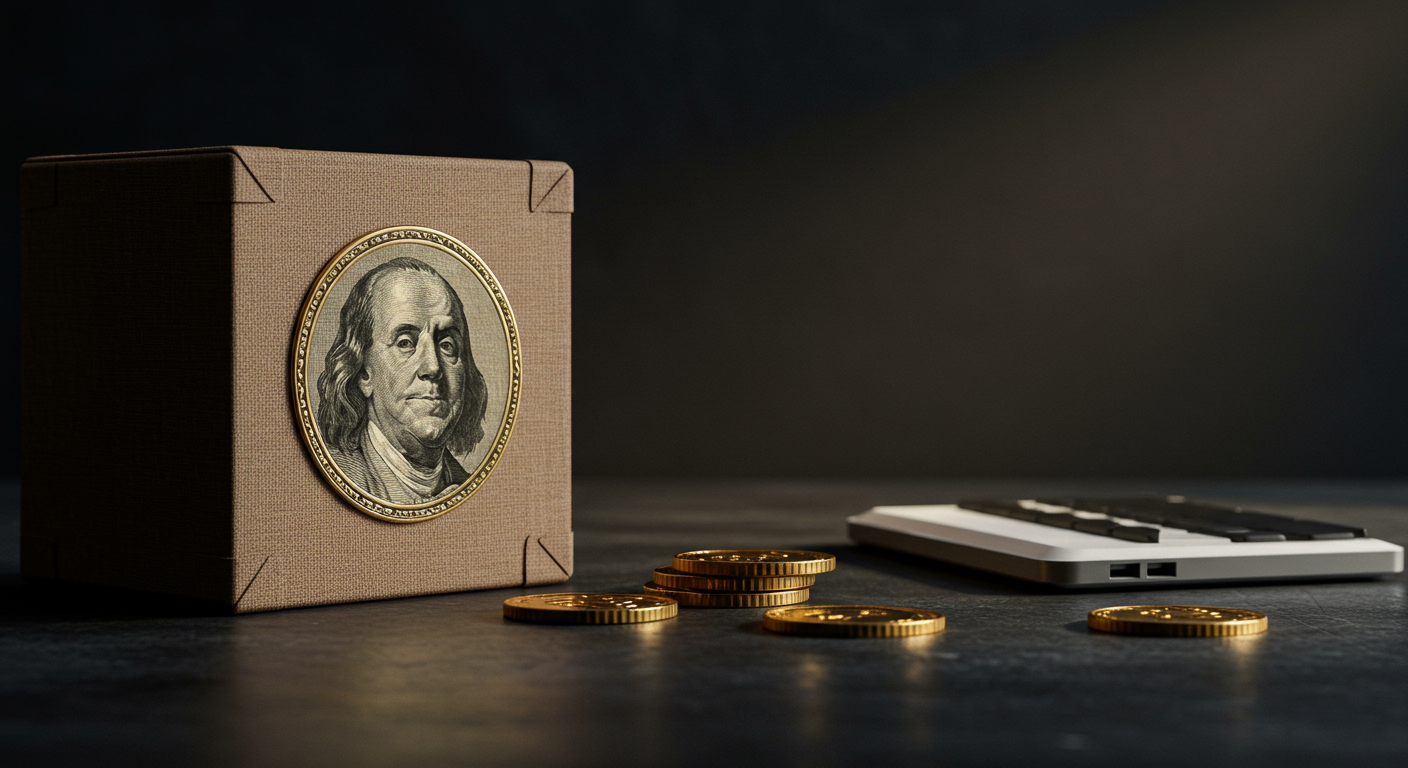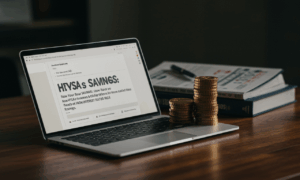High-yield savings products are offering a rare opportunity for savers, as interest rates remain surprisingly high despite widespread discussion of future cuts. If you’ve been waiting for the right moment to make your savings work harder for you, the current market for Certificates of Deposit (CDs) presents a compelling scenario worth exploring. This article will break down the recent news, explain what it means for your personal finances, and detail how you can potentially leverage this financial climate to your advantage.
We will delve into why these rates are holding steady, what a CD is, and how it differs from other savings vehicles. Understanding this landscape is the first step toward making informed decisions that align with your financial goals, whether that’s building an emergency fund, saving for a down payment, or simply growing your wealth safely.
The Current Climate: A Window of Opportunity for Savers
In the world of personal finance, the interest rates offered on savings products are closely tied to the broader economic environment, particularly the policy decisions made by the Federal Reserve. For much of the past year, savers have benefited from a high-rate environment. The surprising news is that even with economic indicators suggesting the Fed may lower its benchmark rate later this year, the rates on many consumer financial products, especially CDs, have not yet followed suit.
Here’s what the data shows:
- Sustained High APYs: Many online banks and credit unions continue to offer Certificates of Deposit with Annual Percentage Yields (APYs) exceeding 5.00% for terms ranging from six months to two years. Some longer-term CDs are also posting highly competitive rates.
- A Lag in Market Reaction: Typically, the rates on savings products anticipate the Fed’s moves. If the market expects a rate cut, banks might start lowering their own rates in advance. However, this has been happening slower than anticipated, creating a valuable window for consumers.
- Increased Competition: Financial institutions are still competing for customer deposits. This competition helps keep rates attractive as banks aim to secure capital from savers looking for a good return.
This situation essentially gives you the chance to “lock in” a high, guaranteed rate of return for a set period, insulating a portion of your savings from any potential rate drops in the near future. It’s a strategic move that many are considering to maximize their interest earnings while they can. For those looking to improve their savings strategy, now is a critical time to pay attention.
What Exactly is a Certificate of Deposit (CD)?
Before capitalizing on these high rates, it’s essential to understand the product itself. A Certificate of Deposit is a specific type of savings account that holds a fixed amount of money for a fixed period, known as the “term.” In exchange for leaving your money untouched for the entire term, the financial institution pays you interest at a fixed rate, which is typically higher than what you’d get from a standard savings or checking account.
Think of it like a formal agreement: you agree not to touch your funds for, say, one year, and the bank agrees to pay you a guaranteed 5.25% APY on that money over the year. This predictability is one of its main attractions.
The Pros and Cons of Using CDs
Like any financial instrument, CDs have their own set of advantages and disadvantages. Evaluating them is key to deciding if they fit into your financial plan.
Advantages:
- Safety and Security: CDs from banks are typically insured by the Federal Deposit Insurance Corporation (FDIC), and those from credit unions by the National Credit Union Administration (NCUA), for up to $250,000 per depositor, per institution. This makes them one of the safest places to put your money.
- Guaranteed Returns: The interest rate is fixed when you open the account. Your return is guaranteed as long as you don’t withdraw the funds early. This eliminates the volatility and risk associated with market-based investments.
- Higher Interest Rates: CDs almost always offer better rates than traditional savings accounts, rewarding you for the commitment of locking up your funds.
Disadvantages:
- Limited Liquidity: This is the biggest trade-off. Your money is tied up for the entire term. If you need to access it before the maturity date, you will almost certainly face an early withdrawal penalty, which could eat into your interest earnings or even your principal.
- Rate-Lock Disadvantage: While a fixed rate is great in a falling-rate environment, it can be a drawback if interest rates unexpectedly rise. If you lock in a 2-year CD at 5% and six months later new CDs are being offered at 6%, you are stuck with the lower rate.

Practical Applications: How to Use a CD in Today’s Market
Given the current news, how can an average person use this information? The primary strategy is to lock in a high rate now to protect your earnings from future rate cuts. This is particularly useful for money you have set aside for a specific, time-bound goal.
Example Scenario: Saving for a Down Payment
Let’s say you have $15,000 saved for a down payment on a house, and you plan to buy in about 18 months. You don’t want to risk this money in the stock market, but you also don’t want it earning next to nothing in a standard savings account. Opening an 18-month CD currently offering a 5.00% APY could be an ideal solution.
By the end of the term, your initial $15,000 would have earned approximately $1,145 in interest, bringing your total to $16,145. This entire return is guaranteed, regardless of whether the Federal Reserve cuts interest rates three times during that period. You have successfully shielded your savings goal from economic shifts.
A Note on Strategy: The CD Ladder
For those worried about liquidity, a strategy known as “CD laddering” can be effective. Instead of putting all your money into a single CD, you divide it among several CDs with staggered maturity dates. For example, with $10,000, you could put:
- $2,500 into a 6-month CD
- $2,500 into a 1-year CD
- $2,500 into an 18-month CD
- $2,500 into a 2-year CD
This way, a portion of your money becomes accessible every six months. As each CD matures, you can either use the cash or reinvest it, perhaps in a new longer-term CD if rates are still favorable. This balances the benefit of high rates with the need for periodic access to your funds, offering a more flexible approach to your investment portfolio.
Disclaimer: Not Financial Advice
It is crucial to remember that this article is for informational and educational purposes only. The information provided does not constitute financial or investment advice. The examples are hypothetical and are not a recommendation to buy or sell any specific financial products. Before making any financial decisions, you should conduct your own research and consider consulting with a qualified financial advisor who can assess your individual circumstances, risk tolerance, and goals. Your financial situation is unique, and what works for one person may not be suitable for another. For more general information, you can always check our news section.
Frequently Asked Questions (FAQ)
What happens to my CD’s interest rate if the Federal Reserve cuts rates after I’ve already opened it?
Nothing at all. This is the primary benefit of a CD in the current environment. Your interest rate and APY are locked in for the entire term of the CD. If you open a 2-year CD with a 5.00% APY, you will continue to earn that 5.00% for the full two years, even if new CDs being offered drop to 3.00% during that time. Your return is guaranteed.
Is a CD a better choice than a high-yield savings account (HYSA) right now?
It depends on your goals, specifically your need for liquidity. An HYSA offers a variable rate, meaning it will likely fall if the Fed cuts rates, but it allows you to withdraw money anytime without penalty. A CD offers a fixed, often higher rate, but your money is locked up. If you have funds you are 100% certain you will not need for a specific period (e.g., 1-2 years), a CD is likely the better choice right now to lock in the high rate. If the money is part of your emergency fund or you need flexible access, an HYSA remains the superior option.



